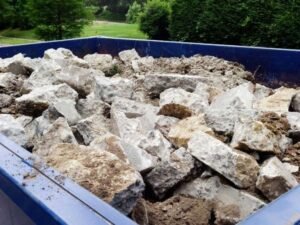Have you ever noticed cold drafts sneaking into your home, even when the doors and windows are shut? Small cracks and gaps can cause significant energy loss, making your heating and cooling systems work harder.
This leads to higher energy bills and an uncomfortable living space. The good news is that spray foam insulation can effectively seal these gaps and improve your home’s efficiency.
By the end of this guide, you’ll know exactly how to apply spray foam insulation like a pro! Read on!
Understanding Spray Foam Insulation
Spray foam insulation is a liquid material that expands upon application to fill gaps and cracks. It comes in two types: open-cell and closed-cell foam.
Open-cell foam is softer and better for soundproofing, while closed-cell foam is denser and provides better insulation. This type of insulation is great for attics, walls, basements, and even small crevices around pipes and vents.
Gathering Your Materials and Safety Gear
Before you begin, gather all the necessary materials to ensure a smooth application process. You will need a spray foam insulation kit, safety goggles, gloves, and a face mask.
It’s essential to wear long sleeves and pants to protect your skin from accidental contact. Proper ventilation is also crucial, so open windows or use a fan to keep air circulating.
Prepping the Area for Application
Proper preparation is key to achieving the best insulation results. Start by cleaning the surface where you’ll apply the spray foam.
Remove dust, dirt, and any loose material that could affect adhesion. Cover nearby surfaces with plastic sheets or painter’s tape to prevent accidental overspray. Make sure the area is dry since moisture can interfere with the foam’s ability to expand and stick properly.
Applying Spray Foam Insulation Step-by-Step
Now it’s time to apply the spray foam insulation. Shake the canister or mix the components if using a two-part kit.
Hold the nozzle about 12 inches from the surface and spray in short bursts to control expansion. Start with small amounts, as the foam will expand significantly after application. Move steadily along the gaps and crevices, making sure to fill them without overapplying.
Common Mistakes to Avoid
Beginners often make mistakes that can affect the insulation’s performance. Overfilling gaps can lead to excessive expansion, causing the foam to overflow and create a mess.
Not wearing proper safety gear can result in skin irritation or breathing difficulties. Skipping surface preparation can lead to poor adhesion, reducing the insulation’s effectiveness. Also, be mindful of humidity levels, as extreme moisture can affect the foam’s expansion.
Maintaining and Evaluating Your Insulation
After applying the insulation, give it time to cure completely before making any adjustments. Inspect the sealed areas to ensure there are no missed spots or gaps.
If needed, apply additional foam to reinforce weak areas. Regularly check your insulation for any signs of wear, especially in extreme weather conditions. If you’re looking for a cost-effective way to improve your home’s insulation, consider a spray foam insulation DIY project!
Mastering Spray Foam Insulation for a More Efficient Home
Spray foam insulation is an excellent way to seal gaps, improve energy efficiency, and create a more comfortable home. By following this step-by-step guide, you now know how to apply spray foam insulation like a pro.
With the right preparation and techniques, you can save money on energy bills and reduce drafts in your home. Whether you’re sealing a small crack or insulating an entire room, this method makes a big difference.
Did you like this guide? Great! Browse our website for more!










